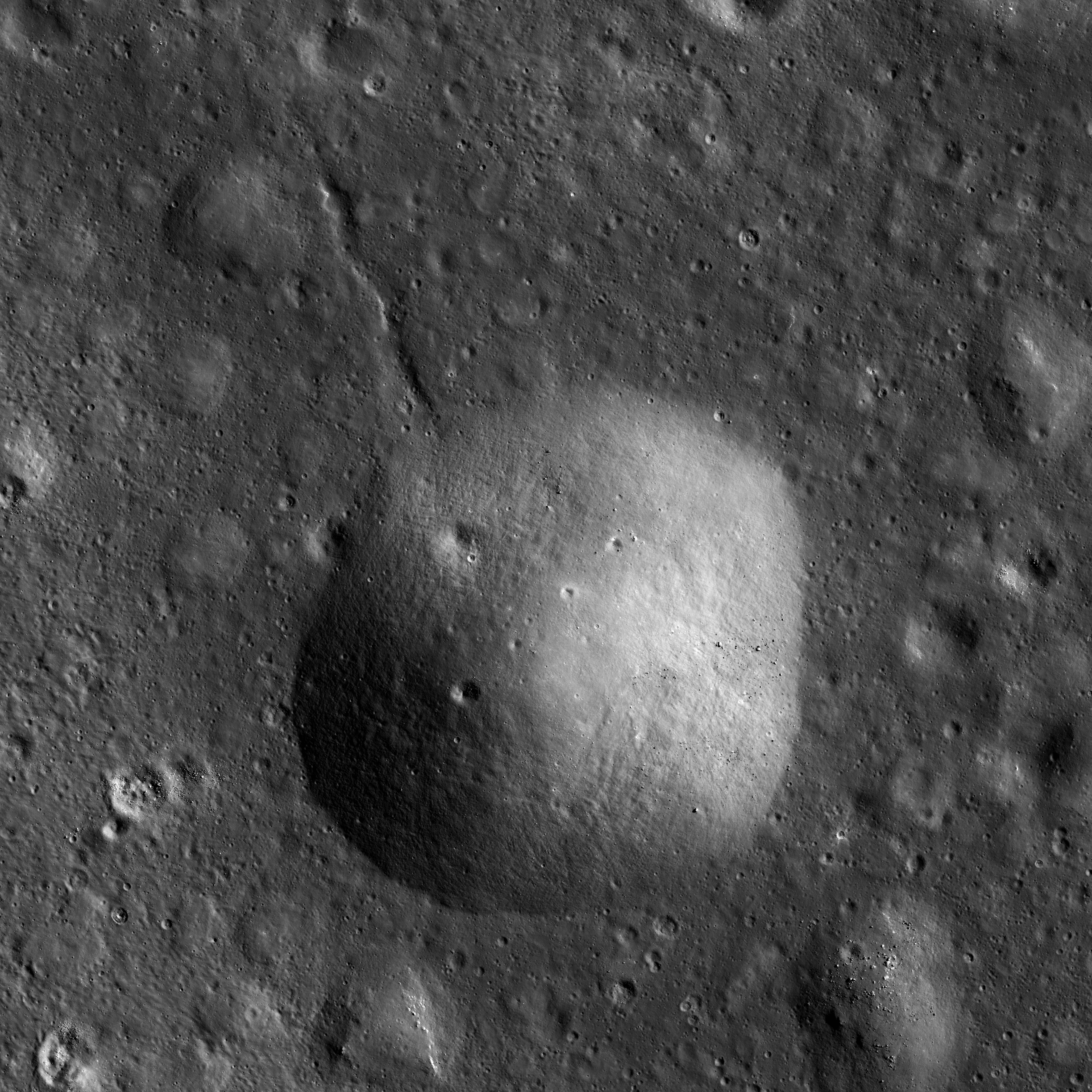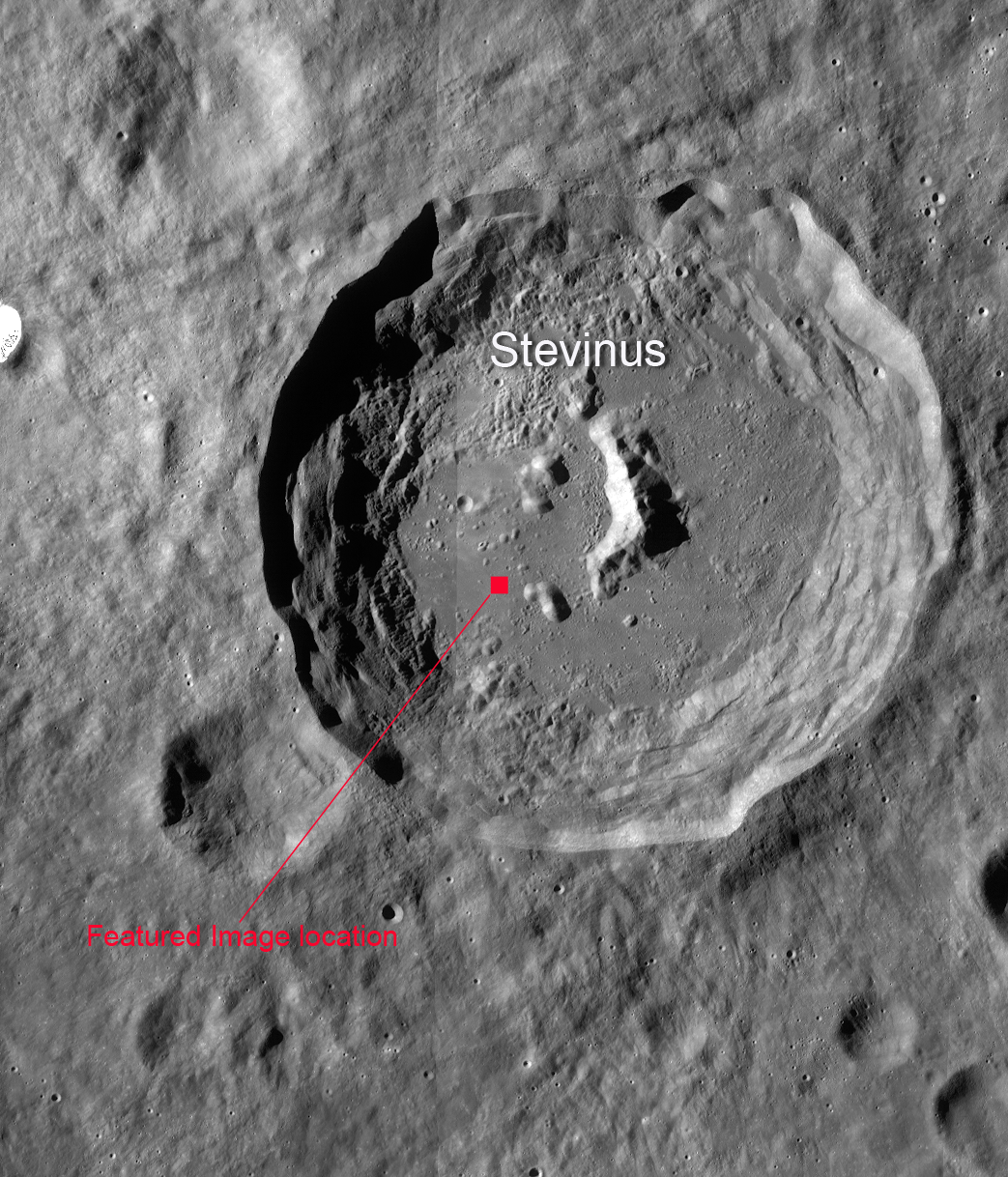
Today's image explores a portion of the Stevinus crater floor (southern hemisphere, nearside highlands). Here we see a topographic feature that can be found by the dozens throughout the area in many shapes and sizes. These mounded forms show positive relief upon a flat surface of ponded impact melt deposits (now solid). Some are circular, while others show more irregular outlines. Some occur in clusters that appear to have coalesced, and others superpose one another. Some have smooth upper surfaces and others appear deflated with depressed central portions. The featured dome likely superposes an extension crack, indicating that it occurred after the crack formed.
What caused these peculiar mounds on the floor of Stevinus crater?
While not entirely clear without a better understanding of melt pond dynamics for still-molten deposits, we note that moderately viscous materials can behave in odd ways. The isolated occurrence of individual domes suggests molten behavior with each dome forming in-situ from a local source just beneath its position. Since the phenomenon is occuring in impact melt, we would be wrong to call this behavior volcanic. But something similar to volcanism in the sense that molten rock is locally "erupting" from an accumulated, still-hot deposit, might be appropriate for conceptual purposes. Perhaps isostatic readjustment of the crater floor "squeezes up" these blobs through holes or cracks in crust as the melt mass cools and thickens. This mechanism might explain why today's mound is centered over a fracture.
Perhaps experiments with analog melts would be a good way to study impact melt behavior. Of course collecting samples is always recommended for any geologic study. What kinds of samples would be helpful for determining the solution to this mystery? Where should they be collected from and why?
Explore the full NAC frame below. Other examples of odd features in impact melt deposits can be found with the Melt Fractures in Jackson Crater, Rippled Pond, and Anomalous Mounds on the King Crater Floor Featured Image posts.
Published by James Ashley on 23 April 2013
